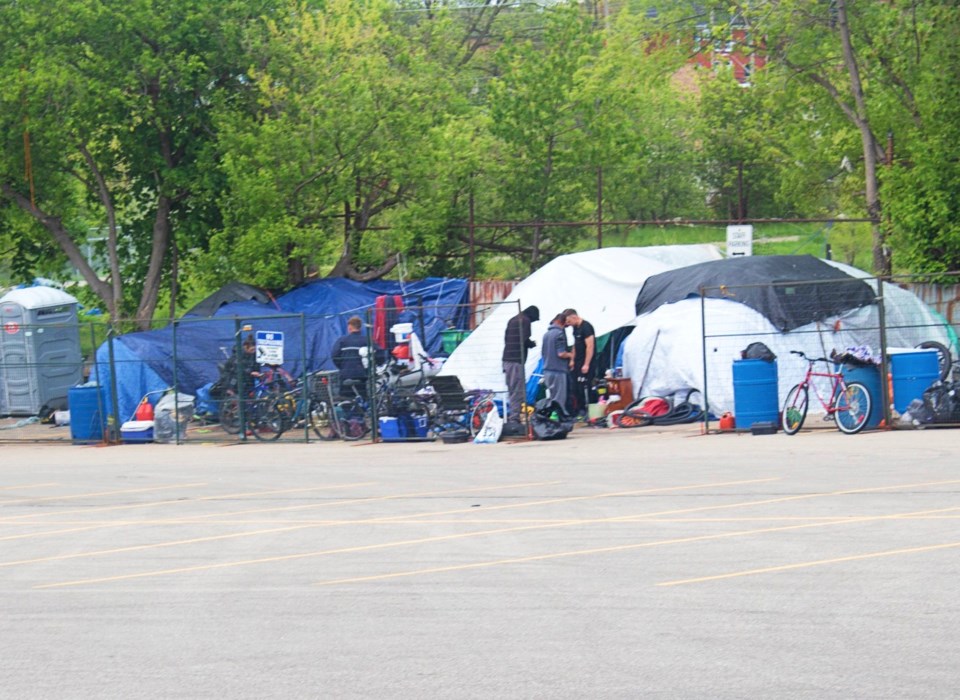It’s been just under a month since people first began living at the Region of Waterloo’s first hybrid shelter.
Since the initial group moved in on April 27, 42 of the 50 cabins have been filled, said The Working Centre’s director Joe Mancini. He added that these first residents were pulled from the groups living at various encampments within Waterloo Region.
Mancini said 11 of the residents came from Cambridge, the majority from the 150 Main St. encampment, with some coming from other outlying camps in the city.
An update provided to regional council this week counted 28 individuals at 150 Main St. on March 1.
Nine moved to the hybrid shelter on Erb's Road, four moved to the House of Friendship's new shelter on Weber Street North in Waterloo, one moved to supportive housing, one moved the King Street shelter in Kitchener, two were deemed unsuitable for housing in the outdoor shelter, seven declined all offers of shelter and plan to remain on site in Cambridge, two declined a cabin at the outdoor shelter on Erb's Road and have left 150 Main, and two couldn't be located by staff.
Mancini said the focus was for the group that came to Erb's Road was to help them feel comfortable choosing to live at the new shelter, something he feels optimistic about.
“It’s a real adaptation for people to get familiar with the space, to get comfortable in the space and people are feeling like it is really taking shape,” Mancini said. “It’s becoming a new community and a new home for people.”
While the first month has gone well from the shelter’s perspective, there still remains a large presence at the encampment at 150 Main St., as well as two other encampments in Kitchener.
Mancini said the people living there are still the main focus for the remaining units at the shelter, but it is ultimately the individual’s decision whether or not to move to the Erbs Road location.
According to the Region of Waterloo, the focus is on working with the new shelter.
“At this time, staff are concentrating our efforts on supporting The Working Centre as they fill cabins and help people settle in. As with any new initiative, it takes time,” Kelly-Anne Salerno, assistant director of housing operations and administration at the Region of Waterloo, said in a statement to Cambridge Today.
Mancini echoed this and said he’s going to give the shelter a few months and see how it’s working out.
For now, he’s hopeful the new shelter can continue to bring in people living at the encampments and give them the option of living at one of the units, especially with regard to the larger goal of helping the shelter’s residents transition to more secure and consistent housing situations.
While not every unit has been filled, Mancini said the move-in process for the shelter was focused on making gradual progress instead of immediately looking to occupy all of the cabins.
“It wasn’t going to work to bring in 50 people all at once,” he said. “It’s going kind of exactly the timing that we were hoping to achieve. And there’s a whole bunch of people who want to move in, we’ve just been going slow.”
